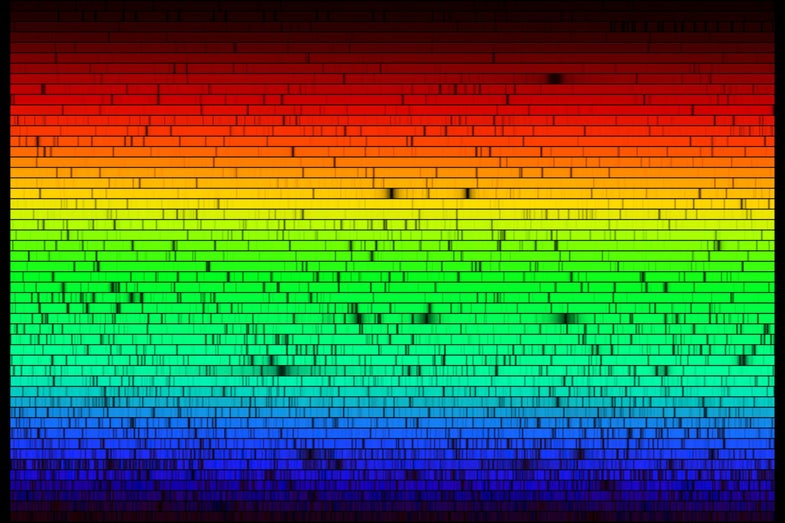These Are All The Colors of Visible Light the Sun Emits
Ever wondered what exactly makes up sunlight?

As we all likely remember from high school physics, white light can be broken up into constituent colors, the components of the rainbow. But have you ever wanted a high quality, very accurate take on that? To see how much of each color comes out of the light from our Sun? That’s exactly what this image shows.
Captured by the National Optical Astronomy Observatory, this image is a complete spectrum of visible light captured from the sun. Each of the 50 slices covers 60 angstroms of the light spectrum, for a range of 4000 to 7000 angstroms (400-700 nanometers).
Just looking at it, you’ll notice a couple of things. For one, it’s brightest in the yellow-green area of the spectrum. It also has a bunch of black lines running through it. These dark patches are from gasses in the Sun’s atmosphere that absorb part of the light, and can be used to identify what elements make up a star based on what light is absorbed.
You’ll also notice that there’s no pink in this spectrum. That’s because pink, while a color that can be created with pigments, isn’t a spectral color, and doesn’t come from a single wavelength of light.
So next time you set your white balance for “daylight”, here’s a look at what that actually means.